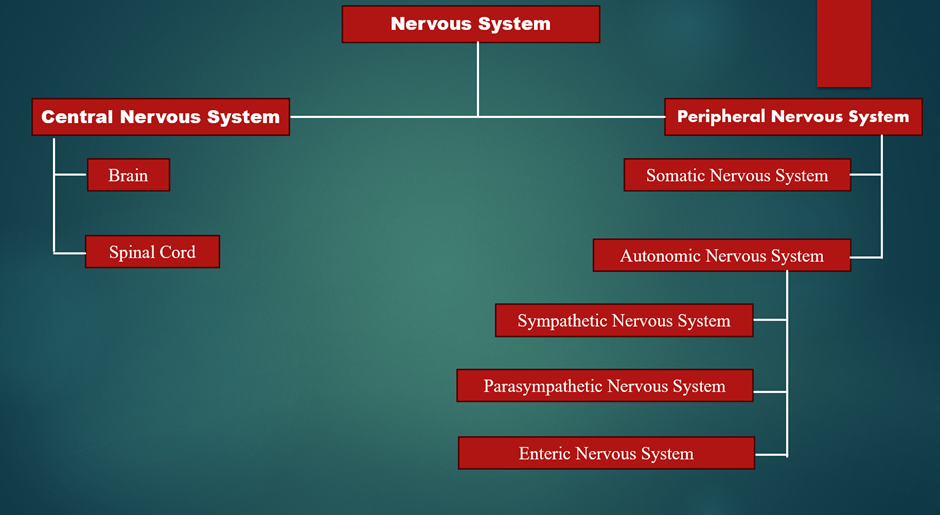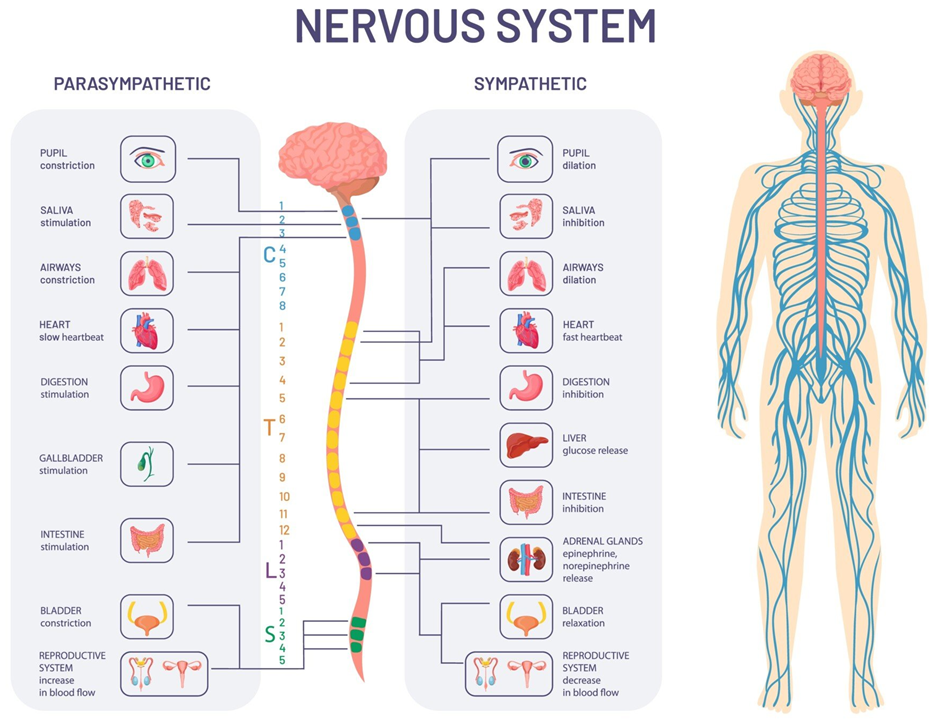Definition of the Nervous System
The nervous system is a highly specialized and intricate network of cells that regulates and coordinates various physiological processes in the body. It is responsible for receiving external and internal stimuli, processing the information, and generating appropriate responses. The nervous system ensures proper communication between different organs, enabling an organism to interact with its surroundings, maintain homeostasis, and carry out essential activities such as movement, sensation, cognition, and reflexes.
The nervous system consists of neurons (nerve cells), which serve as the primary functional units responsible for transmitting electrical and chemical signals, and glial cells, which provide support, protection, and nourishment to the neurons. It works in conjunction with the endocrine system to regulate bodily functions and maintain stability in response to changing environmental conditions.
Classification of the Nervous System
The nervous system is broadly classified into two main divisions based on structure and function:
1. Central Nervous System (CNS)
The central nervous system (CNS) is the control and processing center of the body. It is composed of two primary components:
- Brain – The brain is the most complex organ in the human body, responsible for controlling cognitive functions, emotions, perception, voluntary and involuntary movements, and other regulatory activities. It is divided into several regions, including the cerebrum, cerebellum, and brainstem, each of which plays a distinct role in processing information and coordinating body functions.
- Spinal Cord – The spinal cord is a long, cylindrical structure that extends from the brainstem down through the vertebral column. It acts as a vital communication highway, transmitting sensory and motor signals between the brain and the peripheral nervous system. Additionally, the spinal cord plays a key role in reflex actions, enabling the body to respond quickly to stimuli without involving higher brain centers.
The CNS serves as the command center of the body, integrating sensory input, generating motor output, and ensuring coordination between different physiological systems.

2. Peripheral Nervous System (PNS)
The peripheral nervous system (PNS) consists of all the nerves that branch out from the CNS and extend throughout the body. It serves as the communication link between the brain, spinal cord, and various tissues and organs. The PNS is further divided into the following subdivisions:
A. Somatic Nervous System (SNS)
The somatic nervous system controls voluntary movements and is responsible for transmitting sensory information from the external environment to the CNS. It consists of:
- Sensory (afferent) neurons, which carry signals from sensory receptors (skin, muscles, joints) to the brain and spinal cord.
- Motor (efferent) neurons, which convey signals from the CNS to skeletal muscles, enabling movement and coordination.
The somatic nervous system plays a crucial role in conscious activities, such as walking, talking, and performing tasks that require precision and control.
B. Autonomic Nervous System (ANS)
The autonomic nervous system regulates involuntary functions, such as heart rate, respiration, digestion, and glandular secretions. It operates without conscious effort and ensures that the body maintains a stable internal environment. The ANS is further subdivided into:
- Sympathetic Nervous System – Often referred to as the “fight or flight” system, it prepares the body for stressful or emergency situations by increasing heart rate, dilating pupils, and redirecting blood flow to muscles. It enhances alertness and energy expenditure when faced with threats.

- Parasympathetic Nervous System – Known as the “rest and digest” system, it promotes relaxation and recovery by lowering heart rate, stimulating digestion, and conserving energy. It counterbalances the effects of the sympathetic system, helping the body return to a state of equilibrium.
Together, the sympathetic and parasympathetic systems regulate vital functions and ensure that the body can adapt to different physiological demands.
C. Enteric Nervous System (ENS)
The enteric nervous system is a specialized network of neurons that governs the functioning of the gastrointestinal (GI) tract. It operates independently of the CNS and is often referred to as the “second brain” due to its ability to regulate digestive processes such as peristalsis, enzyme secretion, and nutrient absorption. The ENS communicates with the ANS to modulate gut motility and maintain digestive homeostasis.
Functions of the Nervous System
The nervous system is responsible for regulating nearly every activity in the body, ensuring proper communication, coordination, and response to stimuli. Its key functions include:
1. Sensory Function: One of the primary roles of the nervous system is to detect changes in the internal and external environment. Sensory receptors located in the skin, eyes, ears, tongue, and internal organs collect information about touch, temperature, pressure, pain, light, sound, and chemical changes. This sensory data is transmitted to the CNS for interpretation and response.
2. Integrative Function: The nervous system processes and interprets the sensory information received from various receptors. The brain integrates this information, compares it with past experiences, and determines the appropriate course of action. This function enables humans to recognize patterns, learn from past experiences, and make decisions.
3. Motor Function: Once the brain or spinal cord processes sensory information, the nervous system generates motor output by sending signals to muscles and glands. These signals control movements, reflexes, and physiological responses. Motor functions can be:
- Voluntary (controlled by the somatic nervous system) – e.g., walking, writing, speaking.
- Involuntary (regulated by the autonomic nervous system) – e.g., heartbeat, digestion, pupil dilation.
4. Reflex Actions: Reflexes are automatic, rapid responses to stimuli that occur without conscious thought. They are essential for protection and survival. For example, withdrawing your hand from a hot surface is a reflex action that prevents injury. Reflexes are mediated by the spinal cord, bypassing the brain to ensure a swift response.
5. Homeostasis Regulation: The nervous system works closely with the endocrine system to maintain homeostasis—the stable internal conditions necessary for survival. It regulates:
- Body temperature by controlling sweat glands and blood vessels.
- Blood pressure and heart rate by modulating sympathetic and parasympathetic responses.
- Respiration rate to ensure proper oxygen supply.
- Hormonal balance by communicating with the hypothalamus and pituitary gland.
6. Cognitive and Higher Functions: The brain is responsible for complex cognitive functions, including:
- Memory formation and retrieval – storing information and recalling past experiences.
- Problem-solving and reasoning – enabling decision-making and logical thinking.
- Language and communication – processing speech, writing, and comprehension.
- Emotional regulation – controlling feelings and social interactions.
These functions are governed by different areas of the brain, particularly the cerebral cortex, limbic system, and prefrontal cortex.
Conclusion
The nervous system is one of the most essential and complex systems in the human body. It is classified into the CNS (brain and spinal cord) and PNS (nerves and autonomic functions). The nervous system enables the body to detect stimuli, process information, and generate responses through sensory, integrative, and motor functions. It also regulates homeostasis, cognition, and reflexes, ensuring overall survival and adaptability.
By coordinating with other physiological systems, the nervous system plays an indispensable role in maintaining balance, responding to environmental changes, and supporting both voluntary and involuntary activities.

